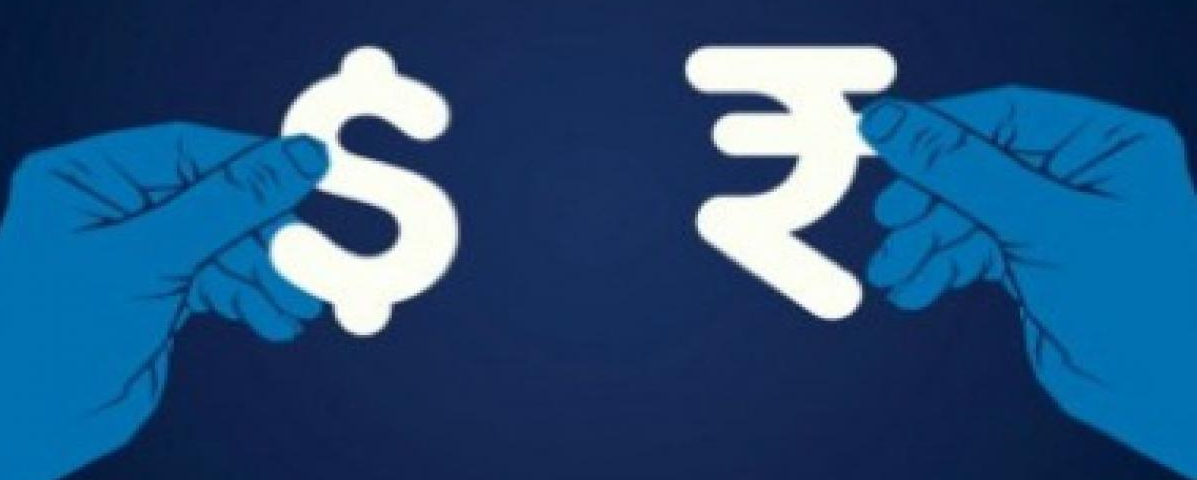- Last week, the Indian Rupee traded in a range bound manner on account of persistent RBI intervention and lack of important events in the markets that could stir up volumes. The trend of US Dollar Index was mute too to provide any influence to the INR.
- Apart from this, the robust release of Current Account dataset from India which has narrowed sharply in the 4th quarter of FY 2022-23 owing to moderation in trade deficit and robust services exports is likely to benefit the Rupee as well. The Q4 CAD dropped to 0.2% of GDP. Further, in Q4, FDI recorded robust sequential rise to $6.4 billion.
- The Indian rupee marked the best month of the current fiscal year and outperformed among the Asian currencies for the quarter ending on June 30, backed by foreign fund inflows, stronger regional peers and risk-on sentiments.
- Foreign Portfolio Investors have invested INR 47,148 crores in Indian equities in June, the highest inflow in 10 months. Additionally, GST collections in June exceeded INR 1.60 lakh crores.
- Further in support of Rupee appreciation is the domestic equity market, the BSE Sensex advanced 385.17 points to touch an all-time high level of 65,103 The broader NSE Nifty also rose 112.35 points to a lifetime high of 19,301.
- India’s forex reserves fell $2.9 billion and stood at $593.2 billion as of June 23. India’s foreign currency assets, the biggest component of the forex reserves, declined by $2.21 billion to $525.4 billion.
Dollar Index gain to 102.91, up by 0.01% last week against previous week’s close of 102.90
- Dollar Index experienced a somewhat disheartening week, as the initial rally supported by hawkish remarks from Fed Chair was halted by subsequent inflation data release.
- Fed Chair Jerome Powell struck a decidedly hawkish tone at the ECB Forum last week. Referring to the latest economic projections, Powell noted that a strong majority of FOMC anticipates “2 or more” rate hikes by year’s end. Further, he did not rule out the possibility of rate hikes at consecutive meetings.
- Market pricing of the Fed hiking by 25bp in July increased over the week (from around 70% probability to 80%) supporting demand for the US Dollar Index. Resilient data raise hopes of a soft landing.
- US inflation is moving lower but remains uncomfortably high, helped in part by a robust US jobs market, while the economy is growing but at a slower rate. Softer household spending, coupled with weaker inflationary pressures, may give the Fed the cover it needs to adopt a less aggressive stance.
- While policymakers may still be inclined to raise borrowing costs by 25 basis points in July, given the recent resilience of the US economy, a September hike may be less likely, preventing interest rate expectations from shifting in a more hawkish direction. This situation may cap Treasury yields going forward, creating the right conditions for a U.S. dollar pullback.
Whatliesahead?
Rupee spot (CMP: 81.96) remains lack luster unless weekly close is seen below 81.90 amid negative global cues
- Going ahead the bias for the rupee remains positive from technical as well as from fundamental perspectives. The recent reading of the current account deficit, trade balance, foreign fund inflows & other high-frequency data point towards strength in INR.
- Spot USDINR has been consolidating between 81.50 to 83 in the past 8 months. But as the price range got narrower (81.90 – 82.20) in the last couple of weeks, there is a chance of a directional move on either side in the coming weeks.
- Looking ahead this week, the US dollar is likely to remain sluggish (101.50 – 103.50) with data releases dominating. The Independence Day holiday in the US means the week should start quietly in markets, but US data will soon attract the market’s attention again now that a July Fed rate hike is a consensus view and there is also speculation about a move in September.
- However, The potential for other G7 countries to close their interest-rate differential with the US, the ECB and UK are fully expected to keep hiking rates will keep downward pressure on the US dollar, or at least temper any move higher. The US dollar is set to be driven by external influences as much as domestic data on Quarterly outlook.

